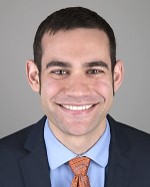Coach’s Corner

About Coach’s Corner
In the best of all worlds, clinical practice guidelines provide recommendations about diagnosis and treatment that are based on solid evidence from phase 3 clinical trials. In many cases, such evidence does not exist and recommendations are provided based on expert opinion. Even then, many questions pertinent to clinical care may be left out of guidelines. In Coach’s Corner, we aim to address some of these gaps by surveying the opinion of clinical experts from the TBP board of advisors in areas where there exists a gray zone. This exercise is not meant to provide definitive guidance for patient care, but rather is designed to highlight the importance of clinical experience and critical thinking in the decision making process.
The opinions presented in this case were obtained in September 2022, and may be subject to change as new evidence emerges.
Question 1
Background: The 2019 American Society of Hematology (ASH) clinical practice guideline on HLH states: “The diagnosis of HLH in adults should be based on the HLH-2004 diagnostic criteria in conjunction with clinical judgment and the patient’s history (strong consensus).” However, some believe that the HScore is most helpful at initial presentation in adults.
We asked our experts:
Question: Do you use the HLH-2004 or the HScore scoring system in a patient with suspected HLH? What drives you to choose one over the other?

Jason A. Freed, MD
Hematology, Beth Israel Deaconess Medical Center; Harvard Medical School
Click for Jason’s answerI find the H-score much more useful because it contains only variables that are actually ascertainable early in a presentation. The HLH-2004 criteria include Low/Absent NK activity (which is of no significance in adults with HLH) and Soluble IL-2R which is a sendout test in most institutions and therefore not useful for making real time decision making. There are several potential pitfalls with using the H-score including that patients with diseases like severe alcoholic hepatitis may also score fairly high. But I find it vastly superior to relying on gestalt or HLH-2004.

Brian J. Carney, MD
Hematology, Beth Israel Deaconess Medical Center; Harvard Medical School
Click for Brian’s answer
William C. Aird, MD
Hematology, Beth Israel Deaconess Medical Center; Harvard Medical School
Click for Bill’s answer
Rushad Patell, MD
Hematology, Beth Israel Deaconess Medical Center; Harvard Medical School
Click for Rushad’s answerI use the HScore scoring system as an objective means to risk stratify HLH in a suspected patient. Although I use the score mostly as a guide, I find that it is quite helpful to objectify my approach. I prefer the HScore as I treat adult patients and the HLH-2004 criteria were developed for primary HLH in the pediatric subgroup.
Question 2
Background: While HLH-94 (corticosteroids, typically dexamethasone, cyclosporine A (CSA), intrathecal therapy, and etoposide) is standard of care in children, a more individualized approach regarding dosing and duration of HLH-94 is often adopted in adults.
The 2019 American Society of Hematology (ASH) clinical practice guideline on HLH states: “Adult, and especially, elderly patients may have chronic comorbidities making them more vulnerable to end organ damage caused by cytokine storm in HLH and HLH-94 chemotherapy. A reduced etoposide frequency, from twice weekly to once a week, with or without a reduction in dose from 150 mg/m2 to 50-100 mg/m2 should be considered.”
The Consensus Statements by the HLH Steering Committee of the Histiocyte Society states: “The decision to administer HLH-94 relies on the severity of the clinical evolution and not solely on the fulfillment of 5 or more of 8 HLH criteria. There are cases of HLH that fulfill less than 5 of 8 criteria, but nevertheless would benefit from timely application of HLH-94 (eg, central nervous system [CNS] HLH). Also, not all patients with HLH require etoposide, even if 8 of 8 criteria are fulfilled. [Strong Consensus].”
Conversely, they write: “Most adult patients with HLH have an underlying triggering condition, in particular infection or malignancy. Although the treatment of the underlying condition has priority, etoposide can be the drug of choice for control of the HLH manifestations in certain cases. [Strong Consensus]… The treatment of HLH in adults is mainly directed against the underlying condition, but corticosteroids and IVIG, and etoposide in severe cases, should not be withheld to control the hyperinflammation.”
We asked our experts:
Question:
When do you use high dose dexamethasone alone for treatment (i.e., no etoposide)?

Jason A. Freed, MD
Hematology, Beth Israel Deaconess Medical Center; Harvard Medical School
Click for Jason’s answerI usually start with high dose dexamethasone while I’m trying to figure out the underlying trigger(s) for the HLH. If patients improve rapidly and no other indications for etoposide have been uncovered (underlying lymphoma) then I just monitor closely without etoposide as we work to find (and then treat) the underlying etiology. But any early worsening or certainly with relapse I give etoposide.

Brian J. Carney, MD
Hematology, Beth Israel Deaconess Medical Center; Harvard Medical School
Click for Brian’s answer
William C. Aird, MD
Hematology, Beth Israel Deaconess Medical Center; Harvard Medical School
Click for Bill’s answer
Rushad Patell, MD
Hematology, Beth Israel Deaconess Medical Center; Harvard Medical School
Click for Rushad’s answerQuestion 3
Background: The 2019 American Society of Hematology (ASH) clinical practice guideline states: “Diagnostic tests for genetic HLH include functional assessment of lymphocyte cytotoxicity and guided genetic testing. They are useful for detecting potential genetic predisposition to HLH in select patients, but pending results must not delay the clinical decision to treat HLH (consensus). Functional and genetic testing are not generally recommended. Functional and genetic testing are not generally recommended in adult patients with HLH because abnormalities are rarely detected.”
The 2018 Consensus Statements by the HLH Steering Committee of the Histiocyte Society states: “Functional and genetic screening for primary HLH can therefore be indicated in patients without an obvious trigger or with risk factors such as consanguinity, familial disease, or features of albinism.”
We asked our experts:
Question: Who would you recommend for genetic screening (since congenital HLH can present in adults)?

Jason A. Freed, MD
Hematology, Beth Israel Deaconess Medical Center; Harvard Medical School
Click for AnswerI think that genetic screening is largely a distraction in adults presenting with HLH since the majority of them have an underlying cause (especially hematologic malignancies, rheumatologic diseases, and infections) that is not genetic. One study suggested that adults with HLH had mutations in HLH associated genes at a similar rate to the general population. I suppose I would pursue genetic testing in an adult under 30 with a second bout of HLH without a discernable etiology. But in my experience, most such adults have an alternative etiology that becomes apparent during an HLH relapse (e.g a previously occult lymphoma).

Brian J. Carney, MD
Hematology, Beth Israel Deaconess Medical Center; Harvard Medical School
Click for Answer
William C. Aird, MD
Hematology, Beth Israel Deaconess Medical Center; Harvard Medical School
Click for Answer
Rushad Patell, MD
Hematology, Beth Israel Deaconess Medical Center; Harvard Medical School
Click for AnswerQuestion 4
Background: The 2019 American Society of Hematology (ASH) clinical practice guideline states: “Patients with aggressive lymphomas should be considered for evaluation of involvement of the central nervous system (CNS), with cerebral magnetic resonance imaging and lumbar puncture”. However, clinical practice guidelines do not specifically address the question of lumbar puncture in other patients with HLH. In How I treat hemophagocytic lymphohistiocytosis, Jordan et al wrote: “All patients should receive a careful neurologic examination, lumbar puncture, and brain MRI, even if asymptomatic, as soon as they can be safely performed.”
We asked our experts:
.
Question: Do you perform a LP for all patients with suspected HLH ? If not what goes into that decision?

Jason A. Freed, MD
Hematology, Beth Israel Deaconess Medical Center; Harvard Medical School
Click for Answer
Brian J. Carney, MD
Hematology, Beth Israel Deaconess Medical Center; Harvard Medical School
Click for Answer
William C. Aird, MD
Hematology, Beth Israel Deaconess Medical Center; Harvard Medical School
Click for Answer
Rushad Patell, MD
Hematology, Beth Israel Deaconess Medical Center; Harvard Medical School
Click for Answer